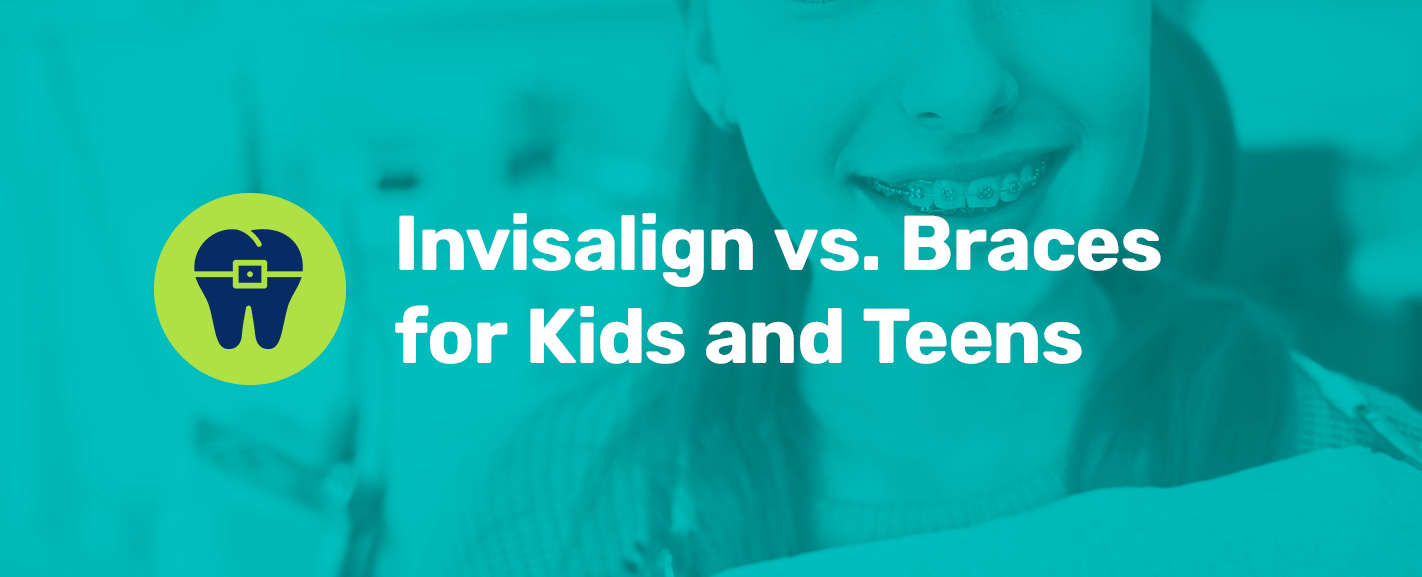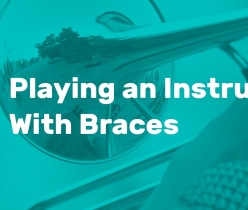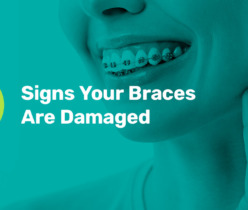When you first find out that your child’s permanent teeth are coming in crooked, your first thought is probably about getting them braces. Though people have been looking for ways to improve their smiles for millennia, orthodontic braces as we know them have been around in some form since the late 1800s.
Everyone knows someone who had braces as a kid, and for good reasons — they work. But you probably also know that there have been great advancements in the world of orthodontics that give you and your child more options. You may have already heard of Invisalign and Invisalign Teen as an alternative to braces, but you might not be exactly sure how the two corrective methods stack up to each other.
Is Invisalign better than braces? Are braces better than Invisalign? We break down the critical differences between braces and Invisalign to help you evaluate which is best for your child.
Outcome
Emotional Differences
Cost of Invisalign vs Braces
Is Braces or Invisalign faster?
Care Differences for Braces & Invisalign
Metal Braces & Athletes
Other Types of Braces
Pros and Cons of Braces & Invisalign
Invisalign vs. Braces: How Do They Work?
If you haven’t had braces before, the way they actually work may be a bit of a mystery. These quick definitions of each treatment type will set you up for a better comparison of the two.
- Braces: With conventional braces, metal brackets are bonded to the enamel of every tooth. The orthodontist then maneuvers a metal archwire between each bracket that is connected to the brackets by colorful elastic O-rings (this is where you get to pick the fun colors!). You can also opt for clear braces that match your natural teeth color and are less noticeable. The archwire can then be adjusted to pull teeth back to a better position over time.
- Invisalign: Clear aligners are made using a 3D image of the patient’s mouth. The patient receives a succession of progressively different clear trays that gently move the teeth less than a millimeter. Each tray guides the tooth into a better position than the previous tray. And each individual tray is worn one to two weeks before moving on to the next tray. Invisalign trays are easy to put on and remove.
So, which is better? Invisalign or braces? It depends on several factors which we’ll explore in depth.
Outcome
Traditional braces and Invisalign are both great treatment methods and can deliver exceptional results. Some orthodontic problems are better handled with braces, and some are better corrected with clear aligners. And then some bites are corrected equally well by both. It’s best to discuss your particular alignment problem with an orthodontist, and they can shed some light on which system can deliver the best result for you or your child.
That being said, many other decisions go into which treatment option is the best.
Emotional Differences
The most glaring difference between traditional braces vs. Invisalign is the emotional component. The idea of having wire bands and brackets attached to the teeth on a semi-permanent basis is enough to give any adult anxiety, and kids nearing the right age for orthodontic intervention are generally more concerned about their social status than the average adult.
Some kids love the idea of conventional metal braces because they get to pick out their braces’ colors every time they go in for an orthodontic appointment. Others, however, would rather not have such noticeable braces on their teeth.
Because Invisalign is much harder to detect on sight, kids tend to spend less time feeling self-conscious about their treatment if aesthetics are of concern. The possibility of anxiety and self-esteem issues linked to conventional metal braces is usually the primary reason parents and kids look into Invisalign instead of braces.
Cost of Invisalign vs. Braces
The other primary question when deciding on Invisalign or regular braces is one of cost. Which is cheaper? Braces or Invisalign? On the whole, braces are usually less expensive, but not always. Invisalign aligners are custom-made to each individual person, so there is a lot that goes into the 3-D technology with Invisalign, and this can contribute to the overall cost.
Braces, on the other hand, are meant to be easy for an orthodontist to work with. They can perform a visual inspection and adjust the wires accordingly, without having to involve the third-party lab as Invisalign does. If cost is your primary concern, traditional braces may be the less expensive way to go.
On average, the cost of braces can range between $5,000 – $7,000 where the cost of Invisalign can range from $4,000 – $7,000. Keep in mind, these prices are only estimates and are subject to change based on several factors. Sprout works with parents to create in-office payment plans which can lower the cost down to under $200 per month in many cases.
Comfort of Invisalign vs. Braces for Kids
Straightening one’s smile involves the movement of teeth, and this can cause varying degrees of discomfort and soreness for your child. This is true whether they have braces or Invisalign. Yet one reason many parents choose Invisalign for their children is that clear aligners have the potential to reduce some of the discomfort caused by braces while still achieving great results.
Invisalign applies less pressure to teeth, reducing the amount of pain your child will experience over time. Invisalign aligners also consist of smooth surfaces, which is different from many types of braces which have jagged metal edges that can irritate your child’s tongue and inner lips. This is especially true if your child plays sports.
Yet, it’s also important to remember that both Invisalign and braces will become more comfortable over time as your child grows more familiar with the treatment process.
Invisalign vs. Braces: Which Is Faster?
This is a tricky one because the length of treatment with both clear aligners and braces depends mostly on the degree of correction required. Braces have an average treatment time of 12 to 36 months, with some extreme cases taking even longer to correct.
The thing to remember is clear aligners are not usually suitable for the most severe orthodontic issues. In more complex or difficult orthodontic cases, braces typically come out on top in terms of treatment speed. However, clear aligners are getting much better at handling difficult orthodontic problems, so it really depends on the specific issue at hand.
Braces are worn 24/7 for the duration of treatment, whereas Invisalign trays are worn for about 22 hours a day. There’s also the fact that teens opting for Invisalign treatment have to actively commit to the treatment. If your child isn’t the most diligent and frequently forgets to put their aligners in for the required timeframe, the period required for treatment will get longer.
Overall, speed is not usually a significant factor in choosing metal braces or Invisalign. Your child’s orthodontist can give you a more detailed estimate of how long braces or Invisalign will take to straighten the teeth.
How to Choose a Local Orthodontist
Effectiveness of Invisalign and Metal Braces
Most people are aware of the teeth-straightening ability of metal braces. The high success rates of patients using metal braces are due in part to the fact that only the orthodontist can remove them. If you choose braces when your child needs orthodontic treatment, the teeth-straightening process will continue each day barring any accidental breakage. The strength of braces also makes them a great choice if your child has severely misaligned teeth.
Invisalign aligners are highly effective at straightening slight misalignments to moderately crooked teeth. Success rates are high when children wear them properly, but this also causes a dilemma. The ability to remove clear aligners can cause many patients to forget to put them back in or wear them for the recommended length of time. If you choose Invisalign for your child, help them remember to wear their trays as directed by their orthodontist for the best results.
Caring for Clear Aligners vs. Metal Braces
It’s not always easy to get your kids to take care of their stuff, and that applies to both braces and clear aligners. Although braces can be cheaper than Invisalign, they come with upkeep requirements that some teens might not be able to follow well.
The braces, wires and rubber bands included in this form of treatment can easily attract bits of food as well as plaque. If your teen doesn’t keep up with brushing and flossing after every meal, they can end up with stained teeth, or even an increased risk of tooth decay and/or gum disease. Needless to say, that kind of visual blemish partially defeats the purpose of braces in the first place.
Flossing and brushing with braces is a bit of a complex task. Flossing, in particular, requires some dexterity and patience for a teen to thread the floss through the small space between the main archwire and the part of the tooth that’s closest to the gums. Brushing should be done with a soft toothbrush in combination with a “Christmas tree” brush, also known as a proxabrush. This specially designed brush makes it possible to clean between two braces. Teens with braces should also avoid a relatively wide variety of foods, including those that are:
- Crunchy: Think popcorn and chips.
- Sticky: These are things such as gum or caramel.
- Hard: This includes nuts and ice.
Your teen will also have to avoid certain foods that require biting into like carrots, apples, and corn on the cob. It can be incredibly frustrating for some teens to have to think about every single thing food item they put in their mouth, giving metal braces a relatively steep learning curve. Most often, teens will have to modify how they eat their favorite foods by cutting food into smaller bite-sized pieces prior to eating.
Clear aligners, on the other hand, require practically no maintenance by comparison. When it’s time to chow down, teens can pop out the Invisalign tray and eat their fill of a variety of foods without any of the strain or discomfort that can accompany eating with braces. When they’re finished, they can brush their teeth as usual and pop the alignment tray back in. The disruption to your teen’s habits is minimal, which is ideal for kids who may be on the less responsible end of the spectrum when it comes to diet. Keep in mind that eating with Invisalign trays still in the mouth is a big no-no. Not only will it gunk up the trays, but there is also a higher risk of cavities, as food can get stuck underneath. An Invisalign patient must always remove their trays prior to eating and drinking (except for water).
The one thing to keep in mind is that because the Invisalign trays are removable, there’s a chance of losing them. It’s not hard to imagine a teen sitting down to lunch, taking out their trays and being so caught up in a good time with their friends that they simply forget to take it with them and put it back in. Ordering a replacement tray can be a bit of an ordeal, and having to make time to pick it up can be a significant headache for busy parents. Losing a tray can also extend treatment time. However, sometimes we can just skip to the next aligner in the series, but it’s on a case-by-case basis. So better to not lose them in the first place! Additionally, since they are removable, teens need to be on-board with wearing them the appropriate amount of time during the day. It’s very easy for patients to remove them when the teeth get a bit sore or for social engagements, and then forget to put them back in. This is an obvious problem that can slow or even stop correction.
You should also know that every successful tooth-alignment treatment includes follow-up care and post-treatment checkups. When your child achieves a straight smile, you must make sure it’s there to last. Routine visits with your child’s orthodontist after treatment will ensure the results are long-lasting.
Metal Braces and Athletes
Invisalign Teen is also a great option for kids who are into sports and athletics. Sports that require mouthguards, such as wrestling and football, don’t play well with traditional metal braces. While there are special orthodontic mouthguards that can be used with braces, they tend to be rather cumbersome. This can lead to teens skipping the mouthguard altogether.
If a teen experiences impact to the face with braces and without a mouthguard, two things can happen — they can damage their braces, leading to tedious repair, or their braces can cause damage to the soft tissues of the mouth. In the worst scenarios, both happen at once.
Clear aligners fit tighter to your teen’s teeth, so traditional mouthguards are more usable. And if your teen forgets their mouthguard or decides to be a rebel and skip it, the chances of damaging the Invisalign tray as well as the mouth are lessened than with braces.
What About Other Types of Braces?
You may be wondering if conventional braces are the only alternative to Invisalign or if there are any options for a braces alternative. While they are the most common, there are some other options that your child’s orthodontist may offer. The following three are the types of alternative braces you’re most likely to see.
1. Ceramic Braces
In this system, the brackets are made of ceramic (instead of metal), due to their similarity to the color of teeth. These brackets blend in really nicely with the color of teeth and offer a great cosmetic option over metal braces. If the idea of metal braces is bothersome and Invisalign seems like a hassle, ceramic braces might be the best option. However, like real teeth, the ceramic is quite easy to stain if patients skimp on their cleaning routine. Ceramic braces are generally more expensive than metal, but usually, it’s only slightly more costly.
When it comes to ceramic braces vs. Invisalign, clear alignment trays serve the same function of being nearly invisible. It really comes down to which treatment modality seems like the better fit to the patient.
2. Self-Ligating Braces
This type of metal brace is occasionally used today. Instead of the rubber band system of holding the archwire in place, self-ligating braces use brackets that have doors or clips that keep the wire in place. This system is intended to speed up the first stage of alignment, and the metal doors can be easier to clean for some patients.
Drawbacks to self-ligating braces include the fact that the wire fits a little more loosely in the bracket than it would with a rubber band. That limits the orthodontist’s ability to control the finer details during the last stage of alignment. The self-ligating doors may also wear out over time and require the use of rubber bands anyway. Self-ligating braces can cost more than the standard type. And maybe most importantly, patients don’t get to choose a fun braces color with self-ligating braces. This last one is usually a deal-breaker for many patients!
3. Lingual Braces
These work almost the same way traditional braces do, except they are on the backside (or tongue side) of the teeth rather than the front or cheek side. They’re just as effective as regular braces, but you can’t see them from the outside of a closed mouth. They do come with drawbacks, however, including difficulty in cleaning since the wearer can’t see them while brushing and flossing.
Lingual braces can also steepen the learning curve for talking with braces since they can interfere with the tongue. They are generally more expensive and take longer than traditional braces in some cases. Additionally, the tongue can become irritated as it moves against the braces and archwires.
Bringing It All Together: Pros and Cons
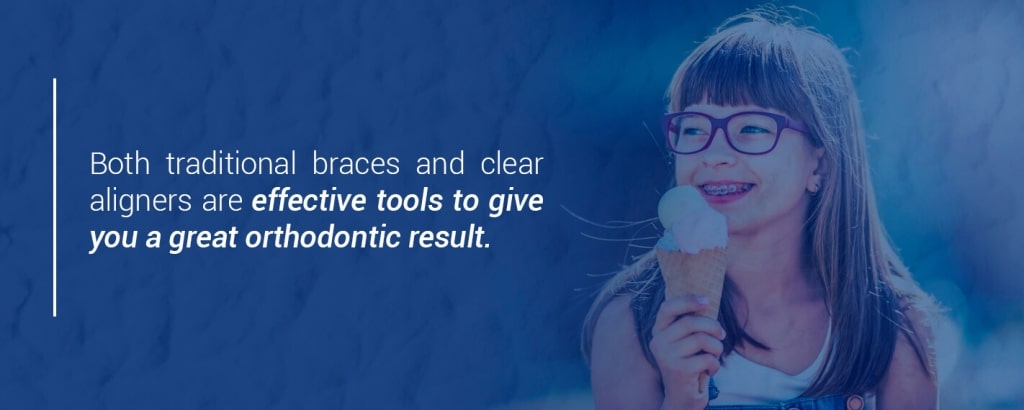
Now that you have a better idea of metal and ceramic braces vs. Invisalign, let’s review and summarize the benefits of each. The benefits of standard braces include:
- Lower overall cost
- Treatment of more severe orthodontic issues
- Can’t get lost
- May work more quickly
- Fun color choices
The benefits of clear aligners include:
- Less discomfort
- Clear and nearly invisible
- Less dietary restrictions
- Easier oral hygiene
- Better for athletes
The bottom line is that both traditional braces and clear aligners are effective tools to give you a great orthodontic result. Some bites work better with braces and some work better with Invisalign. Beyond that, it’ll depend on each patient’s tolerances and lifestyle. If budget is your number one concern, metal braces will usually win. However, we understand the huge impact that orthodontic intervention will have on your teen’s life, no matter what method you choose.
If you’re not sure how your teen will handle the aesthetic impact of braces, or you’re worried they won’t be able to commit to the food restrictions and maintenance requirements, Invisalign may be worth it. Of course, there are limitations to what can be treated with Invisalign. In cases of severely misaligned teeth, Invisalign may not be as effective. So ceramic braces may be the way to go. In some cases, your child’s orthodontist may recommend starting with standard braces and switching to Invisalign as alignment progresses.
Making the Next Move
When choosing between Invisalign and braces for your teen, the first step is to consult with an orthodontist to go over your options for treatment and financing. Choosing an orthodontic treatment for your child is an investment in a healthy and happy future, so picking the right orthodontist is essential.
At Sprout Pediatric Dentistry & Orthodontics, we take pride in providing traditional braces (both metal and ceramic) and clear aligner treatments in a teen-friendly environment. Having the right orthodontist reduces your teen’s stress and discomfort during any type of treatment, including braces and Invisalign.
If you are looking for an orthodontist in Portland, OR, you can trust, come to Sprout. Our dedicated team has the expertise and compassion to make orthodontic treatment less of a headache for both you and your child. For your convenience and financial peace of mind, we accept almost all family dental insurance plans.
We understand the complexity of dealing with your insurance company, so we take the extra step of contacting them on your behalf to give you an estimate of your out-of-pocket costs. And we always offer zero-interest payment plans to help you budget the cost of treatment. If you’re ready to take the next step in getting braces or clear aligners for your child, request a complimentary orthodontic consultation appointment at Sprout Pediatric Dentistry & Orthodontics. If you have more questions about our treatments, feel free to contact us at any time. We’re always happy to explain how we go above and beyond for your child’s dental health.
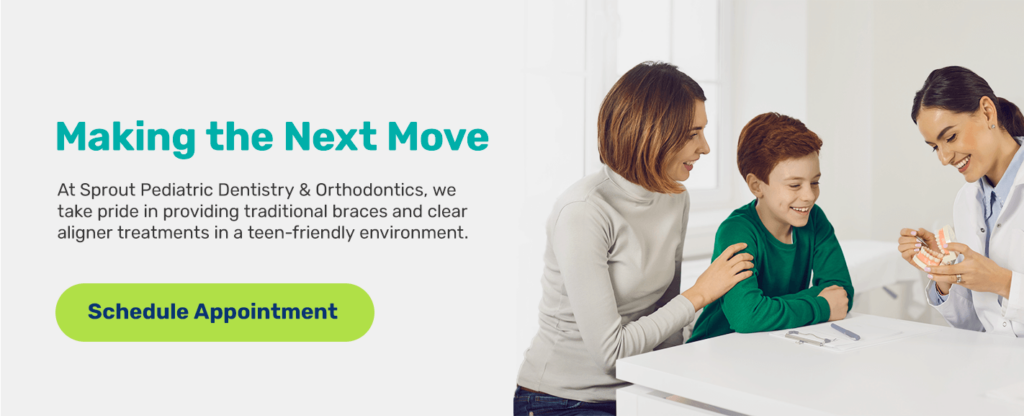

A Portland native, Dr. Paul went to dental school at OHSU and finished his Orthodontic Residency in Philadelphia, PA. Dr. Paul works with children and teenagers at his orthodontic practice.


